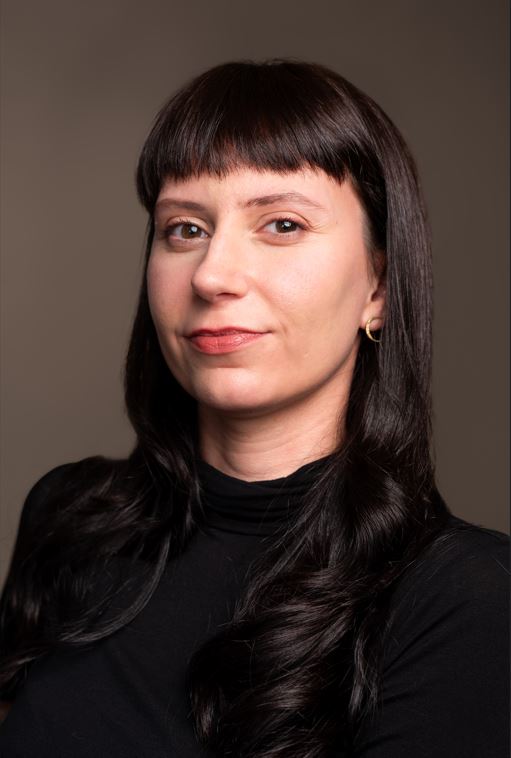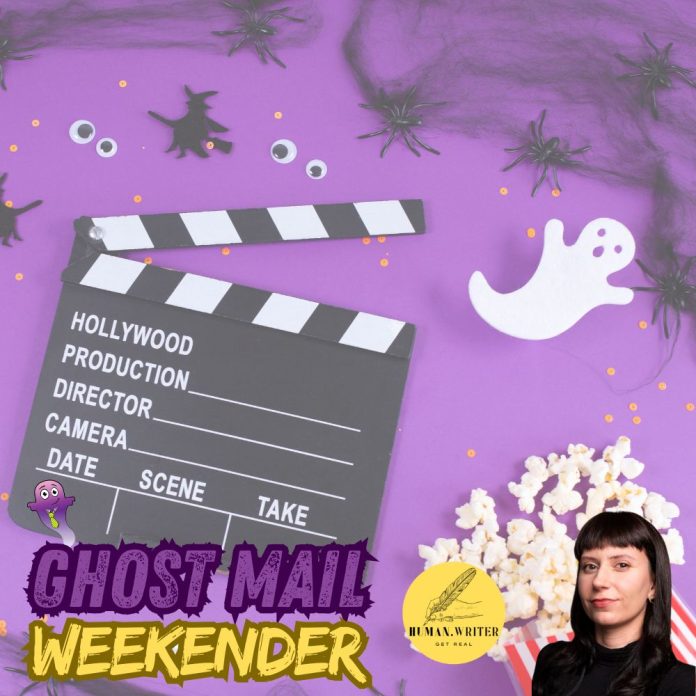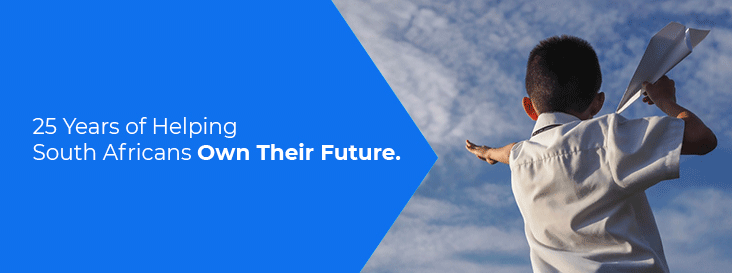We’re the only species that screams for fun. From haunted houses to horror movie festivals, humans have turned fear – evolution’s greatest red flag – into entertainment.
I don’t believe in ghosts (except perhaps the finance variety), but I’ve loved ghost stories for as long as I can remember. The bookshelf in my house is packed with well-loved Stephen King titles, and I reread The Shining every two or three years. There’s almost no amount of on-screen blood, guts or gore that can rattle me at this point. When I recommend films to friends, I have to remind myself that actually, not everyone wants to spend their Friday night peering at the screen through their fingers.
For a while I wondered if there was something wrong with me. Why do I seek out fear as a form of entertainment? In fact, many times when I find myself with my hair on end and my muscles tense in the build up to an inevitable jump scare, I wonder why I do this to myself. Fortunately, the popularity of horror films at my local cinema proves that I’m not alone in my semi-masochistic cravings.
Fear, by definition, is unpleasant. It’s the thing evolution wired us to avoid, not queue up for at the cinema. And yet, we do it anyway. We pay to scream on rollercoasters. We binge true crime before bed. We volunteer to be chased through haunted houses by actors with cardboard chainsaws.
So, what’s the deal? Why do some people crave the thrill while others won’t even glance at a horror trailer? And what exactly makes fear – that most primal of emotions – so much fun?
The science of a good scare
Some clues to our scare cravings can be found in our biology. When we watch a horror film, something curious happens inside us. The fear feels real: our heart rate spikes, our muscles tense, and adrenaline floods our system. But the moment your brain realises you’re not actually in danger, that surge of adrenaline converts into pleasure. Essentially, the same biochemical chaos that makes you want to run also makes you want to watch again.
It’s the same reason people love rollercoasters, bungee jumping, or spicy food (yes, chilli peppers and horror movies live in the same psychological neighbourhood – you can reread my article on why some people seek out the burn here). We seek controlled danger. We want the thrill of surviving something that was never really a threat. It’s like flirting with death, but safely.
Part of the appeal lies in novelty. Horror lets us explore realities we’d never want to live through, like zombie outbreaks, haunted asylums, and demonic dolls, all without consequence. In the same vein, horror scratches an itch that few other genres can: morbid curiosity. We’re fascinated by the dark corners of human nature. Watching fictional killers and possessed children allows us to peek into the abyss without having to step inside. It’s like a psychological safari – a way to study fear, morality, and the fragile line between sanity and savagery, all from the comfort of the couch (or the movie seat).
The frame that makes fear fun
The essential ingredient in our enjoyment of horror is something that a psychologist named Samuel Taylor Coleridge called the suspension of disbelief. This is our willingness to temporarily set aside our critical judgement and accept unrealistic or impossible elements in a story to enjoy the narrative.
Suspension of disbelief makes it possible for us to enjoy works of fiction across multiple genres, not just horror. Despite the fact that we know Anne Hathaway is happily married in real life, we can believe the on-screen chemistry between her and her co-star in a romantic drama enough to cry real tears when she and her love are denied their happy ending. We can root for the heroes in epic war scenes from films like Star Wars and Lord of the Rings as earnestly as we root for the Springboks when they take on the All Blacks. Even when we know that the monster on the screen isn’t real, we trick our own brains into believing what we see until we achieve a real fear response.
But unlike other genres, the suspension of disbelief in horror only works if we know it’s safe. Without that mental buffer, fear stops being fun and starts being trauma.
Researchers call this the psychological protective frame, and it comes in three layers:
Safety frame: You have to believe that you’re physically secure. Freddy Krueger is on screen, not in your bedroom. The moment you start thinking he might crawl out of the TV, the thrill collapses into panic.
Detachment frame: You must remember it’s fiction. That screaming victim is an actor and that pool of blood is corn syrup. Detachment allows you to appreciate the artistry without feeling the pain.
Control frame: You need to feel that you are still in charge. You might scream in a movie theatre, but you also know you can walk out at any time. That sense of agency keeps the fear tolerable, even pleasurable.
Lose any one of these three frames, and the horror stops being “fun scary” and becomes “please make it stop” scary.
Some modern horror films bend these frames to their limits. Think of subgenres like found footage (The Blair Witch Project is a great example, debatably even the first example), where the style of camerawork leads the audience to believe that they are witnessing real footage captured on an abandoned-then-found home video camera. When the footage is scrubbed of the usual Hollywood smoothness and gloss that reminds us that we’re watching a work of fiction, we are pressed up right against the edges of the detachment frame. It becomes harder to disbelieve that what we’re seeing isn’t real, which is why many people describe The Blair Witch Project as the scariest film they’ve ever seen.
Conversely, older horror films (think back to classics like 1982’s Poltergeist and 1984’s Nightmare on Elm Street) almost amplify those frames. Their cutting-edge-at-the-time special effects haven’t exactly aged well when compared to the types of make-up and CGI that we’ve become accustomed to seeing today. It therefore becomes easier to remember that what we’re seeing isn’t real (mainly because it doesn’t look real).
Why some people love it (and others don’t)
Like most things in life, our relationship with fear depends on who we are.
People in the sensation-seeking category, like those who thrive on adrenaline and novelty, are more likely to enjoy horror. These are the same people who love skydiving, spicy chicken wings, or testing speed limits. Those with openness to experience, meaning a vivid imagination and appetite for the unknown, also gravitate toward the genre. Horror gives them a sandbox to explore big emotions, dark fantasies, and ethical dilemmas.
Age and gender play roles too. Young people tend to seek more intense stimulation (part of why horror’s target demographic is often under 30). Men, on average, are more likely to enjoy fear for fear’s sake, while women report enjoying horror more when there’s justice or resolution at the end.
Meanwhile, empaths – people who score exceptionally high in empathy – often struggle with horror. They feel too much. Watching a character suffer becomes less abstract entertainment and more emotional distress. Make sure to save that nugget of information for the next time someone calls you a chicken for opting out of a horror film – you’re not scared, you just care too much!
Personally, I’ve come to realise that horror films (particularly the kinds that feature jump scares) offer a great outlet for my anxiety. In my everyday life, I may be anxious about a hundred different things that never work out quite as badly as I fret and worry that they could. I build up all of this stress and tension in myself, expecting the worst, but then the resolution is often an anticlimax. The call with a client isn’t to end my contract, it’s just to introduce me to a new team member. The “call me urgently” message from my mother isn’t to tell me about the passing of a family member, it’s just to discuss plans for Christmas. That tension has nowhere to go – until I watch a horror film.
Here, when tension is built up, I am assured that a jump scare is imminent. A villain will appear behind the hero’s shoulder, or a monster will leap out behind a corner. I’ll get a big fright that matches the intensity of the tension. It’s a cathartic kind of release that always leaves me feeling better (even in the moments of deepest cinematically-crafted dread).
Perhaps horror is a mirror. It lets us confront danger without consequence, death without dying, and evil without guilt. It reminds us that, deep down, we’re wired to survive and sometimes, to laugh in the face of what terrifies us.
Fear may be the body’s oldest warning system. But for humans, it’s also become a thrill – proof that we can dance with danger and walk away grinning.
About the author: Dominique Olivier

Dominique Olivier is the founder of human.writer, where she uses her love of storytelling and ideation to help brands solve problems.
She is a weekly columnist in Ghost Mail and collaborates with The Finance Ghost on Ghost Mail Weekender, a Sunday publication designed to help you be more interesting. She now also writes a regular column for Daily Maverick.
Dominique can be reached on LinkedIn here.





Love your column! Also love horror movies/series, but not blood thirsty jump scare stuff too much. Ghost stories are my favourite, and vampires. Mike Flanagan being my favourite director and Stephen King my favourite author (he is the king of suspense) 🙂
Can’t fault you on that love of ghosts 😉